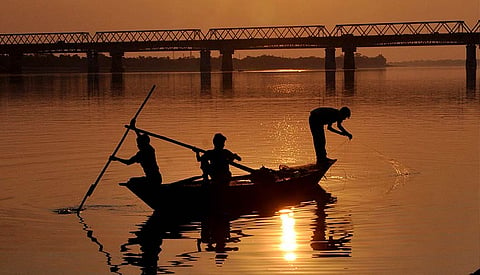
🔧 We’re Under Maintenance
We’ll be back shortly. Thank you for your patience.
We’ll be back shortly. Thank you for your patience.

With China announcing a vigorous five-year plan (2021-2025) to build dams, along its side of the upper banks of the Brahmaputra river, the tension with India is palpable and could move to a new stage – the clash for water.
The recent draft of China’s new Five-Year Plan, which commences from 2021-2025, has put a thrust on the building of dams on the lower positions of the Yarlung Zangbo river, otherwise known in India as the Brahmaputra.
The dams will be built along the exact point from where the water flows into India from Tibet and while China argues these constructions are vital for meeting its climate change commitments and aiding the generation of clean energy it is evident that such measures are meant as a means of provocation and harassment along its borders with India and to take Beijing’s conflict with New Delhi to a new territory – water.
Both nations follow a contrasting pattern of decision making when it comes to the subject of water related issues that includes the wider neighbourhood. China’s approach is unilateral, at least with 11 of its neighbours, while India opts for the more civilised strategy of entering into treaties with Nepal, Bhutan, Pakistan and Bangladesh.
It evident that Beijing has little or no regard for international resolution the 1997 UN Watercourses Convention being a classic in point and neither has it ever sought for or wanted a water treaty with India. In keeping with this approach, it stands to reason that sooner or later the India-China face-off will move to the topic of water sharing.
It is true that China’s positioning along the upper banks of the river gives it an advantage of sorts which cannot be changed but the rest of the region who are, in time, in danger of facing a crisis over water which is universally recognised as a natural resource available to all, needs to come together to address a common concern.
It is evident that India needs to come up with counter measures against China’s strategy. The threat is real given that Chinese sources have confirmed that 60,000 MW of hydropower projects a vigorous attempt at building dams which could choke water flows through Bangladesh and Assam, and if China wants to act irresponsibly then the possibility of flash floods in India and Bangladesh, via the release of huge volumes of water, that have been stored on the other side of the Indian border, can create problems of disastrous proportions.
China is the starting point for rivers is the starting point for rivers that flow into 18 downstream countries. No other nation serves water to so many nations. Data recorded in 2016 says that China has built as many as 87, 000 dams in total.
China has not been idle along its side of the river banks ensuring that over the past decade three dams, Zangmo, Gyatsa and Dagu, have been constructed over a space of 24 kms from each other. These have the ability to control the supply of water into India and beyond. For the record, China is the starting point for rivers is the starting point for rivers that flow into 18 downstream countries. No other nation serves water to so many nations. Data recorded in 2016 says that China has built as many as 87, 000 dams in total.
New Delhi has engaged its errant neighbour to provide data on water flows and storage plans, but thus far China has responded with a stoic silence, or baseless reasons. Given the push for more activity against China by members of the Quad, it is time for India to raise the issue of water security as a matter of bi-lateral concern with Beijing and its neighbours.
As India and China grow in stature economically the emphasis on water is a no-brainer. The effects of this predicament which is hovering on the horizon will be manifold, similar to the conflict along the borders. New Delhi will have to prepare itself to thwart Chinese measures effectively, just as it did in Galwan, while putting the spotlight on Beijing’s highhanded schemes on the international platform.